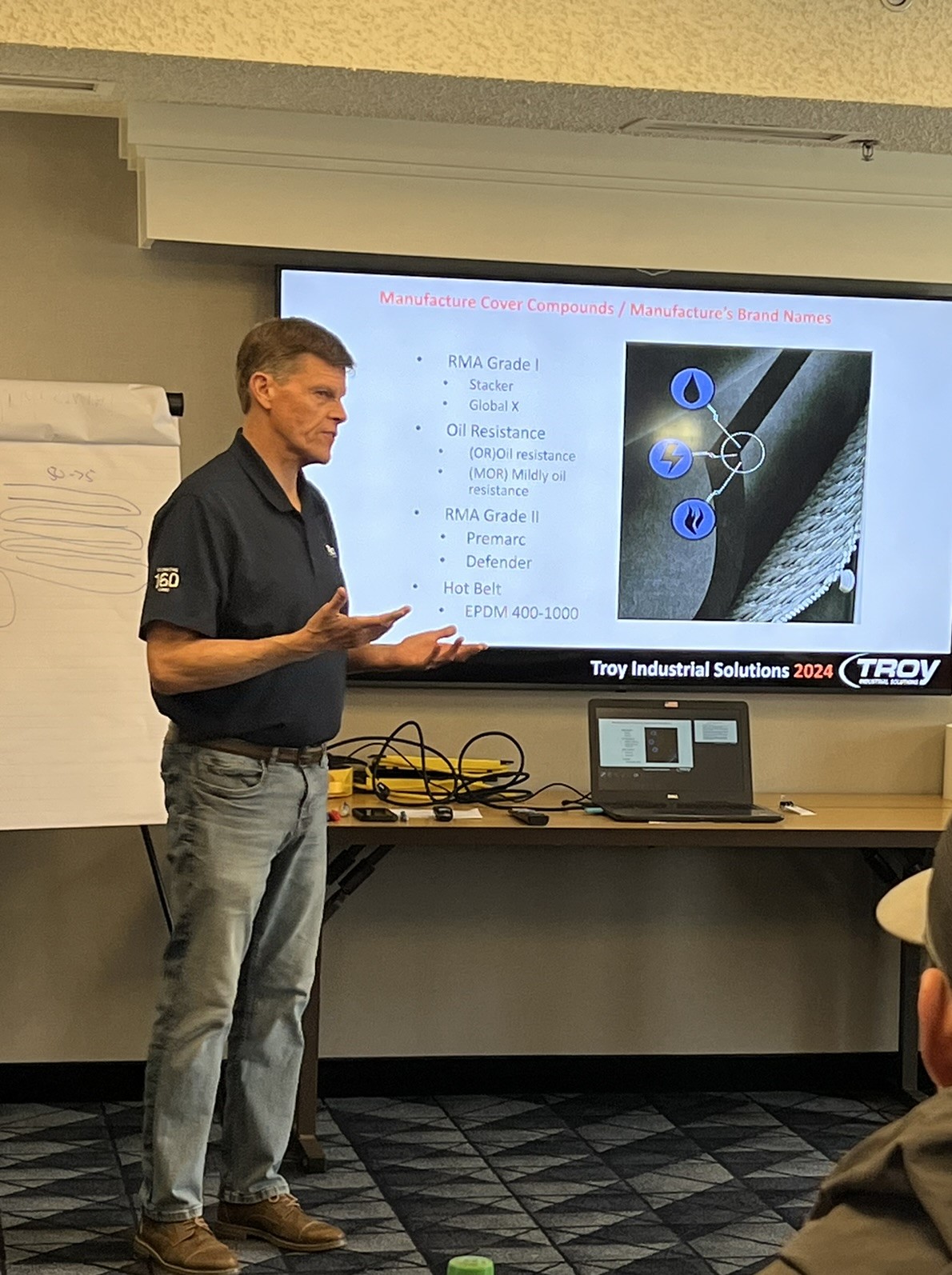
Keeping it on Track: The Importance of Conveyor Belt Alignment
Conveyor belts are the workhorses of modern industry, efficiently transporting materials across various sectors like mining, manufacturing, and food processing. However, their effectiveness hinges on one crucial factor: proper alignment, also known as tracking. A misaligned belt can lead to a cascade of problems, affecting productivity, safety, and profitability.
This post delves into the world of conveyor belt tracking, exploring its importance, stages, and best practices. Whether you’re a seasoned plant manager or just starting out, understanding these concepts can significantly improve your operation’s efficiency and longevity. Troy’s Product Manager, Duncan Rounds is an expert on the subject of best practices for conveyor maintenance and provides answers to some FAQ’s on the subject,
Why Tracking Matters
Imagine a river overflowing its banks – chaos ensues. Similarly, a misaligned conveyor belt spills its contents, creating safety hazards and production inefficiencies. Here’s why maintaining proper belt alignment is non-negotiable:
- Material Spillage: From the abrasive rocks in aggregate processing to the delicate food products in processing plants, spillage is a universal concern. It leads to material loss, cleanup costs, and potential contamination risks. Spilled materials in some industries, like biomass, pose fire hazards, further escalating the risk.
- Premature Belt Wear: A misaligned belt experiences uneven wear and tear, particularly at the edges. This shortens the belt’s lifespan and increases the risk of sudden failures, leading to costly downtime and replacements.
- Increased Energy Consumption: A belt fighting against misalignment requires the motor to work harder, consuming more energy and increasing operational costs.
- Safety Hazards: Spilled materials create tripping hazards and can damage surrounding equipment. In extreme cases, misalignment can even lead to belt derailment, posing a serious threat to personnel and infrastructure.
Stages of Conveyor Belt Tracking
Maintaining optimal alignment involves a comprehensive approach, addressing various stages:
- Inspection: The first step involves identifying potential tracking issues. This includes visual inspections for signs of wear, spillage, or belt movement irregularities. Specialized tools like laser alignment systems can provide precise measurements for a more detailed assessment.
- Diagnosis: Once potential issues are identified, the root cause needs to be determined. This could range from uneven loading and worn-out components to environmental factors like temperature fluctuations.
- Correction: Addressing the root cause is key to effective tracking. This may involve adjusting idlers and pulleys, correcting the loading process, or replacing damaged components.
- Preventative Maintenance: Regular maintenance is crucial to prevent future misalignment issues. This includes lubricating components, inspecting for wear and tear, and ensuring proper belt tension.
 Best Practices for Effective Tracking
Best Practices for Effective Tracking
- Start at the Beginning: Tracking adjustments typically begin at the return side of the belt, near the head pulley, and progress towards the tail.
- Empty Belt First: It’s advisable to initially track the belt while empty and then under load to isolate and address any underlying issues.
- Three Revolutions Rule: Allow the belt to complete at least three full revolutions after each adjustment to observe its behavior and ensure effective correction.
- Think Like a Cyclist: Remember, adjusting the belt’s direction is akin to steering a bicycle – move the idler in the direction you want the belt to go.
- Look Upstream: The source of a tracking problem often lies 15-20 feet upstream from where the issue manifests.
The Future of Conveyor Belt Tracking
The industry is continuously evolving, with technological advancements shaping the future of conveyor belt tracking. Automation plays a key role, with sensors and smart systems monitoring belt alignment in real time, enabling proactive adjustments and minimizing downtime. Additionally, predictive maintenance tools are becoming increasingly sophisticated, leveraging data analysis to forecast potential issues and schedule maintenance before problems arise.
Conclusion
Effective conveyor belt tracking is essential for maintaining a safe, efficient, and productive operation. By understanding the importance of alignment, implementing best practices, and embracing technological advancements, industries can ensure their conveyor systems remain the reliable backbone of their operations. Remember, a well-tracked belt is a happy belt, which means a thriving business. See TIS training video Tracking Your Conveyor Belt, Center the Load









